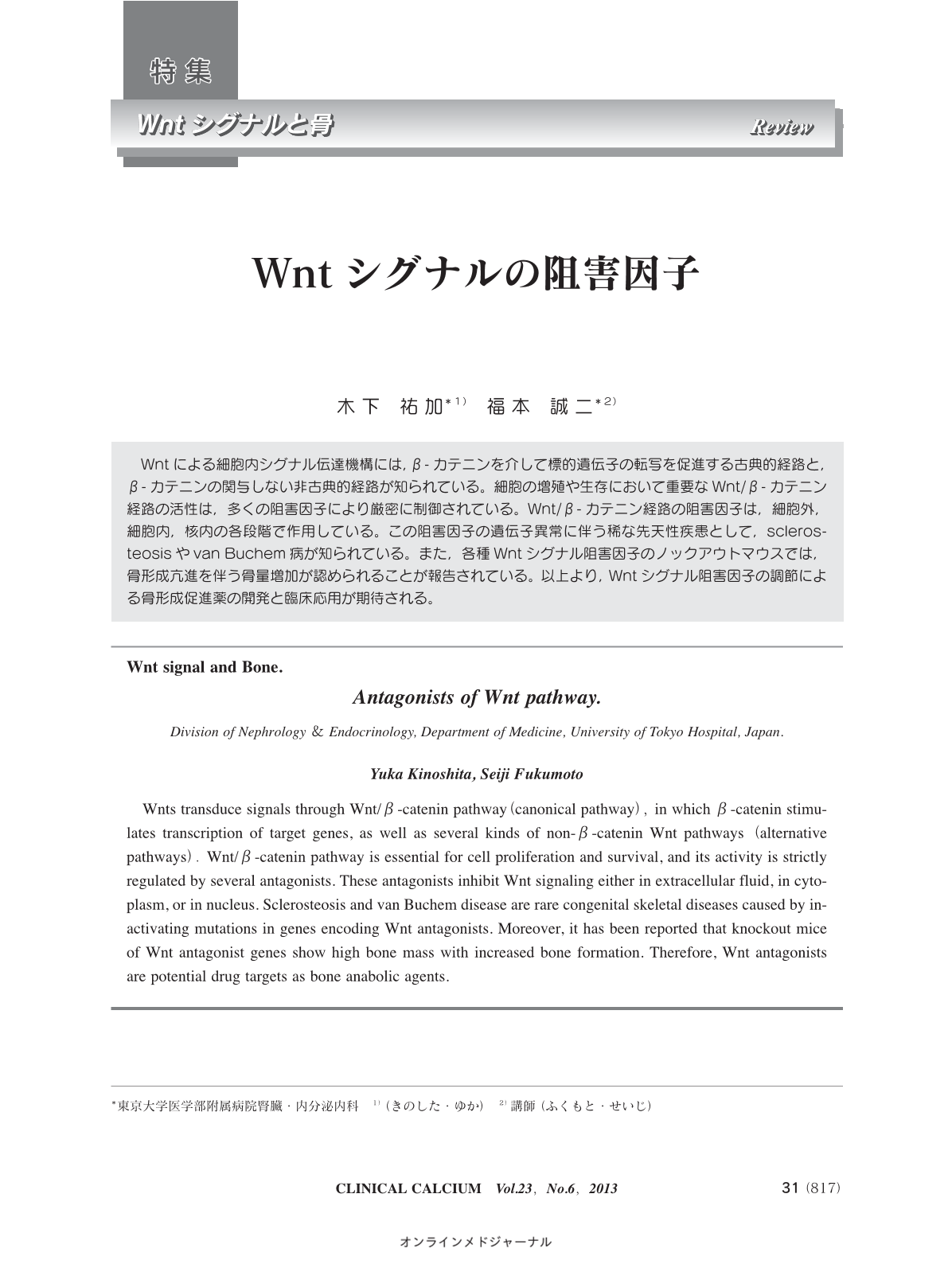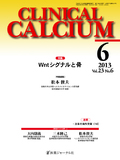Japanese
English
- 有料閲覧
- Abstract 文献概要
- 1ページ目 Look Inside
- 参考文献 Reference
Wntによる細胞内シグナル伝達機構には,β-カテニンを介して標的遺伝子の転写を促進する古典的経路と,β-カテニンの関与しない非古典的経路が知られている。細胞の増殖や生存において重要なWnt/β-カテニン経路の活性は,多くの阻害因子により厳密に制御されている。Wnt/β-カテニン経路の阻害因子は,細胞外,細胞内,核内の各段階で作用している。この阻害因子の遺伝子異常に伴う稀な先天性疾患として,sclerosteosisやvan Buchem病が知られている。また,各種Wntシグナル阻害因子のノックアウトマウスでは,骨形成亢進を伴う骨量増加が認められることが報告されている。以上より,Wntシグナル阻害因子の調節による骨形成促進薬の開発と臨床応用が期待される。
Wnts transduce signals through Wnt/β-catenin pathway(canonical pathway),in whichβ-catenin stimulates transcription of target genes, as well as several kinds of non-β-catenin Wnt pathways(alternative pathways).Wnt/β-catenin pathway is essential for cell proliferation and survival, and its activity is strictly regulated by several antagonists. These antagonists inhibit Wnt signaling either in extracellular fluid, in cytoplasm, or in nucleus. Sclerosteosis and van Buchem disease are rare congenital skeletal diseases caused by inactivating mutations in genes encoding Wnt antagonists. Moreover, it has been reported that knockout mice of Wnt antagonist genes show high bone mass with increased bone formation. Therefore, Wnt antagonists are potential drug targets as bone anabolic agents.



